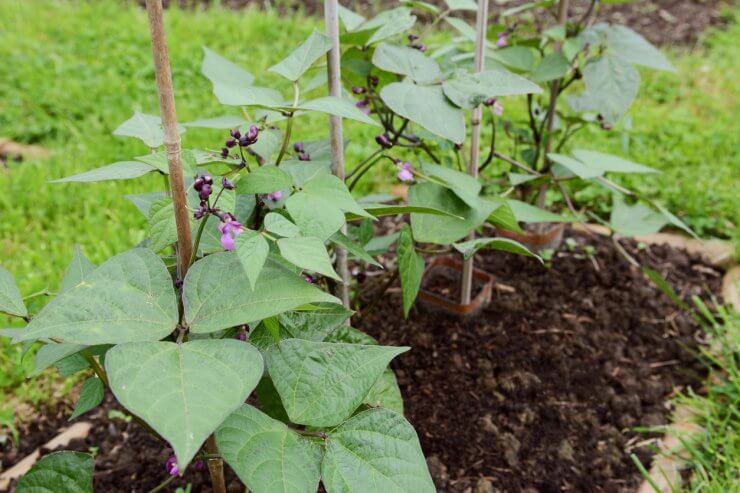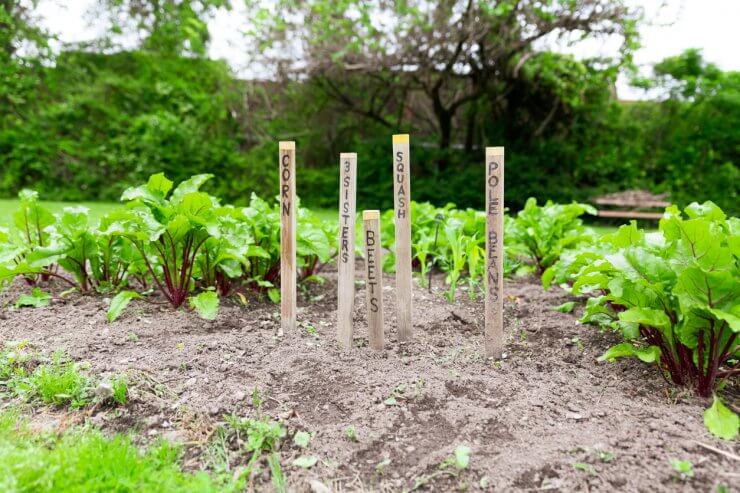
Green beans in open soil
Green beans thrive on sunshine and well-drained soil with a pH of 6.0 to 7.0. Green beans aren’t too particular about their soil, though, so long as it’s warm enough above 50 degrees F when you plant, the soil is slightly acidic, and the plant can get six to eight hours of sunshine, you’re good to go.
Raised beds and open ground
A raised garden bed or planter is an excellent option for growing green beans if you don’t have soil that’s ideal for green beans (heavy clay soil, for example). Raised beds also help with drainage, which is essential for healthy green beans. You can even buy raised beds or build one yourself to fit your space.
Watering and weeding will be easier if you have your green beans in a raised bed or planter; with pole beans, however, harvesting may become a bit of challenge if you plant your green beans in a raised bed that’s on the high side. If you build a raised bed specifically for your pole beans, then you can plan the size of the bed to make it easily accessible even when your beans get taller. It’s a good alternative to growing in open land. And if you fill a raised bed with packaged garden soil, you’re providing a cleaner and healthier environment for your green beans from the outset.
Packaged garden soil means less weeding than you’d have from digging a hole in the ground; and with a raised bed or container, there’s less bending down to do your weeding!
Green beans are really a gardener-friendly plant, and they’ll grow well in open ground—as long as they have plenty of sunshine, good drainage, and the right pH (6.0 to 7.0). Because they germinate quickly, grow fast, and—in the case of pole beans—can be grown to create interesting structures and hideaways, green beans are the perfect crop for children. If you want to grow a gardener, grow beans!
How do you grow your green beans—in open land, in raised beds, or in containers? Why do you prefer your method? Please tell us your tips and tricks for creating an awesome green bean patch.
Companion Planting

Three sisters companion planting
As legumes, green beans produce nitrogen which can benefit surrounding plants. In fact, the Native Americans planted green beans with corn and squash in a configuration called Three Sisters. The beans attract beneficial insects and their nitrogen feeds the corn and squash, the corn provides support for the beans, and the squash plants shade the ground, keeping moisture in and weeds out.
Besides the Three Sisters combination, consider planting an herb garden near your green beans with catnip, which repels flea beetles; summer savory, which repels bean beetles and improves the flavor and overall growth of bean plants; and rosemary and nasturtiums, which deter beetle pests.
Marigolds protect green beans from Mexican beetles and other insects that plague green beans and other plants in the garden. Potatoes also ward off Mexican beetles, and green beans return the favor, repelling the Colorado potato beetle.
Others plant companions for green beans include: broccoli, Brussels sprouts, cabbage, carrots, cauliflower, celery, kale, peas, strawberries, Swiss chard, and tomatoes.
After you harvest your legumes, cut the plants back so they can release their nitrogen back into the soil.
There are some plants that don’t play well with green beans. Pole beans and beets should not be planted together because they stunt each other’s growth. Bush beans and beets get along fine, though. Also, avoid planting green beans near members of the onion, or allium, family. Onions, scallions, garlic, and leeks exude a substance that kills beneficial bacteria on bean roots, stunting growth and blocking green beans from adding nitrogen to the soil.
Sunflowers would seem to be perfect green bean companions, acting as poles like corn, but sunflowers give off a chemical compound that inhibits green bean growth. And green beans growing near peppers can spread and latch onto the peppers, choking them.
How do you plant your green beans? What criteria for site selection has worked for you? Do you include companion plants with your green beans? Please share your ideas with us.


 Previous
Previous


I’ve planted green beans 3 different times this year. The first time, half of a row came up and the other half didn’t have a bean. The second two times, no beans emerged. The seed was new from a reputable Amish seed house and the soil is rich with good moisture. What could be the problem?